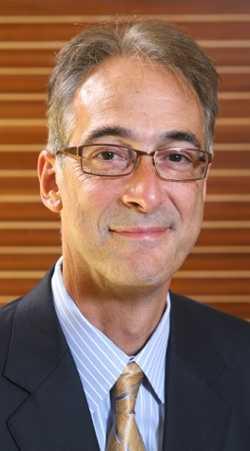- Congressman John Garamendi
- Posted On
Garamendi: California needs a comprehensive water plan – not a $25 billion boondoggle
California’s aging water infrastructure is insufficient for our present and future needs. Unfortunately, the current Bay Delta Conservation Plan (BDCP) and its two massive tunnels is a destructive $25 billion boondoggle that won't solve the problem.
California can solve its water needs and end the water wars that pit north vs. south and water exporters vs. environmentalists – but not with the BDCP.
California needs a comprehensive water plan that generates new water and is focused on six priorities:
1) New water storage infrastructure,
2) Water conservation,
3) Water recycling,
4) Fixing the Delta with levee improvements, habitat restoration, and a right sized conveyance,
5) A science-driven process,
6) The protection of existing water rights.
If the BDCP moves forward, two tunnels will be constructed near Sacramento with the capacity to move 15,000 cubic feet per second (cfs).
To accommodate this massive plumbing project, we would sacrifice prime agricultural land, destroy legacy Delta communities, and potentially suck our Delta dry.
At a minimum cost of $24.5 billion, it’s extraordinarily expensive for California taxpayers and water ratepayers.
Delta farmers, fishermen and recreation businesses would see their livelihoods destroyed to benefit powerful corporate agribusinesses operating on desert lands in part of the San Joaquin Valley.
We need to develop surface and underground water storage systems. Sites Reservoir north of Sacramento could be built and Los Vaqueros reservoir could be expanded at an estimated cost of $4.8 billion creating the capacity to store 1.9 million acre feet of water and providing up to 700,000 acre feet of water to use each year.
The San Louis dam could be repaired and expanded as could Shasta Dam. New reservoirs could be built at Los Banos Grandes and other off stream sites throughout the Central Valley. The underground aquifers of the Central Valley offer enormous storage when used in a conjunctive management system.
The quickest and cheapest new water source is conservation. The California Department of Water Resources estimates that robust conservation efforts in urban water use could save 1 million acre feet of water each year by investing $530 million.
In addition to urban conservation, we must also look to agricultural water users to conserve water. California’s $40 billion agricultural economy needs a sustainable water supply and the technology already exists to conserve 3 million acre feet of water each year at a cost of $1.2 billion over 10 years.
Each year, 3.5 million acre feet of treated water is dumped into the Pacific Ocean by cities in the Los Angeles Basin. How foolish to pump water 500 miles, clean it, use it once, clean it to a higher standard than the day it arrives, and dump it in the ocean. One million acre feet could be recycled and stored in the underground aquifers in Southern California at a cost of $1.3 billion. Similar projects must be done in Northern California. Desalination of ocean water can also add to our supplies.
With adequate investment and implementation, urban and agriculture conservation, recycling programs and new storage could create approximately 5.7 million acre feet of new water to use each year at a projected cost of $7.8 billion.
Any plan that doesn’t include levee improvements in the Delta is a plan awaiting disaster. The BDCP will spend $25 billion, but not one dime to secure the Delta levee system that is necessary for delivering half of the anticipated water supply. How foolish and short sighted. The key Delta levees could be secured at an estimated cost of $1 billion.
The BDCP skips all of these important sources of increased water supply. It's a $25 billion boondoggle that won’t create a single drop of new water for California.
The BDCP plan for habitat restoration is well intentioned, but too extensive and expensive. The plan calls for as much as 145,000 acres of valuable Delta farm land to be converted to wildlife habitat. Every scientific study done thus far doubts the potential of this $10 billion proposal to restore and maintain the endangered fish in the Delta, yet the BDCP moves forward as if money is no problem.
After investing in conservation, recycling, storage and Delta levees and carefully monitoring their progress, it might be necessary to construct a much smaller Delta water delivery facility.
A 3,000 cubic feet per second facility could operate year round delivering 2 million acre feet water to the pumps in Tracy and on to the south.
Instead of destroying heritage communities and Delta farm land, this facility could use the existing 25 mile long Sacramento Deep Water Shipping Channel for water deliveries to a short 12 mile pipe connected to existing channels leading to the Tracy pumps. This could save billions of dollars while preserving the economy and communities of the Delta.
Providing a foundation for these projects is the protection of existing water rights. If we are going to build any project, these rights must be honored.
Stop the $25 billion BDCP boondoggle and use that money on water conservation, recycling, storage, fixing the Delta, a balanced habitat program, and a small Delta facility.
California could create up to 5.7 million acre feet of new water at half the cost of the $25 billion tunnel plan, solve its water crisis, and avoid a fruitless time consuming water war. Only by embracing a comprehensive plan can we avoid this gridlock.
It’s time to move forward and ensure a reliable water supply for the entire state.
Congressman Garamendi represents Northern California’s 3rd Congressional District, which includes part of Lake County. He served as a state senator, lieutenant governor, insurance commissioner and as President Bill Clinton’s deputy interior secretary.



 How to resolve AdBlock issue?
How to resolve AdBlock issue? 





